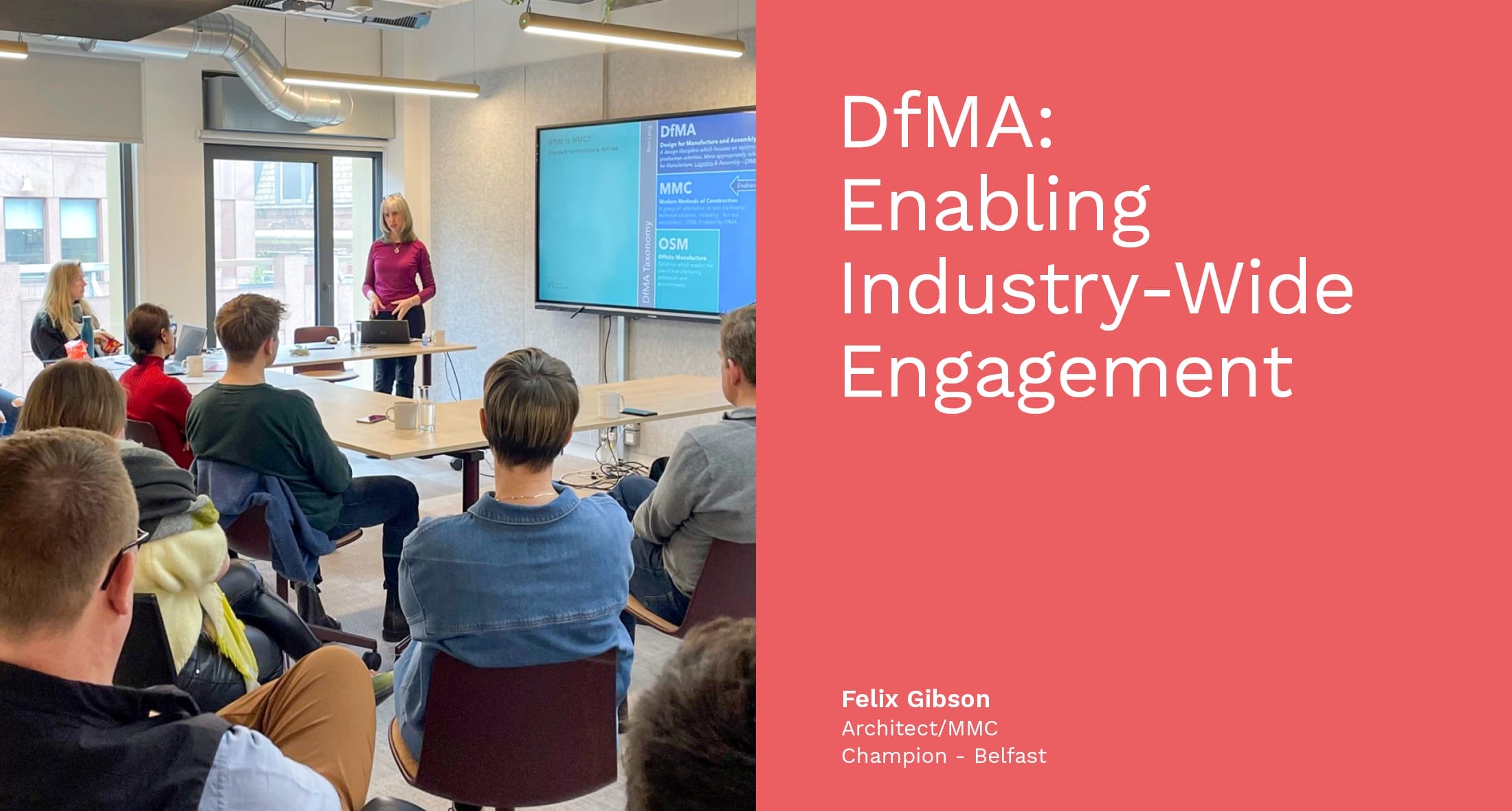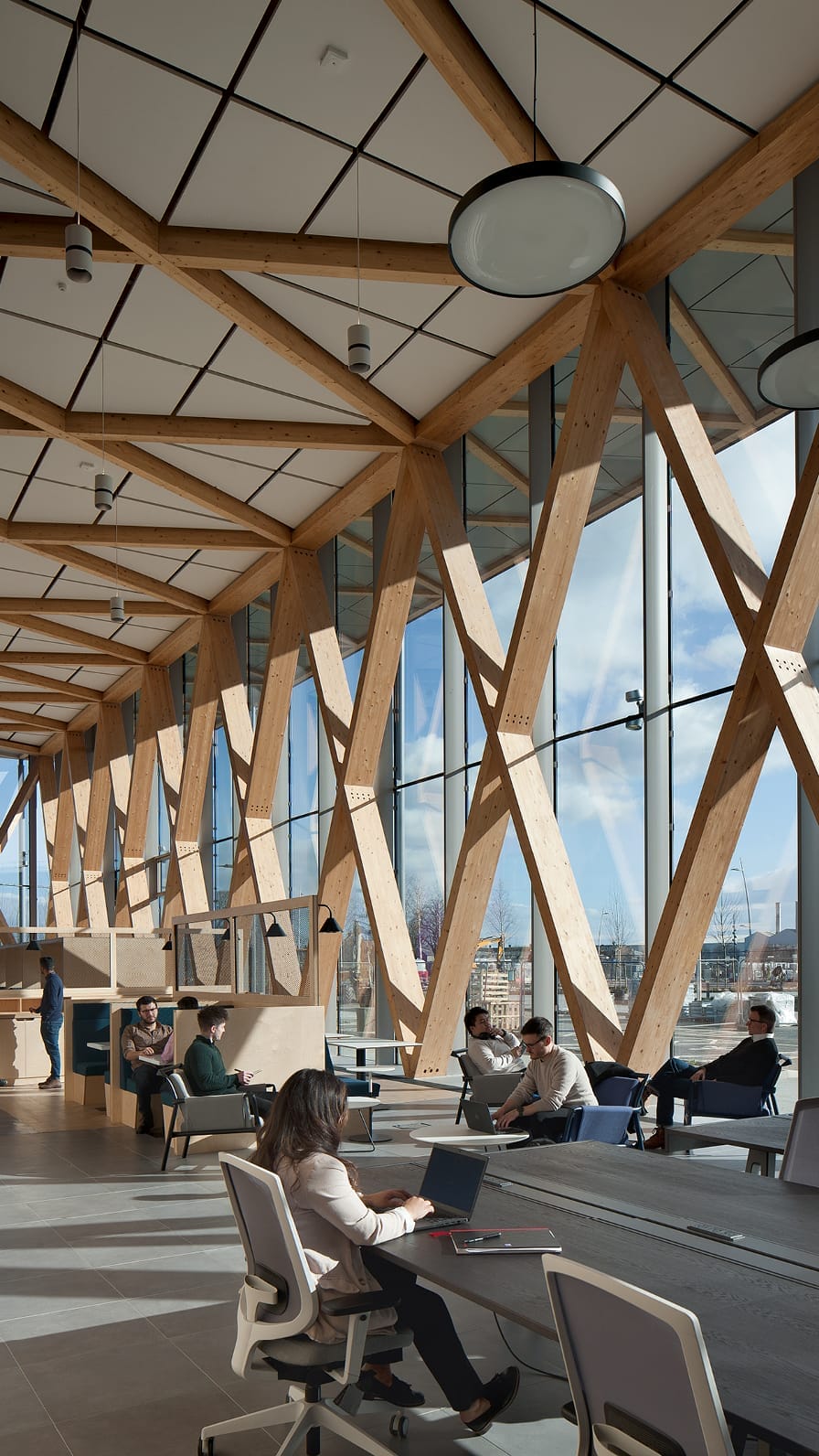
Felix Gibson is an Architect based in the HLM Belfast studio. His experience covers a range of education projects including the MMC1 Framework schools, and he is a keen ambassador for wider adoption of Design for Manufacture and Assembly (DfMA) across building design. Here, he explains why.
Whereas previously, we often designed buildings and offsite-manufactured components were suggested as a means of delivery, DfMA enables us to design for offsite.
DfMA has great implications for the future of construction. Whereas previously, we often designed buildings and offsite-manufactured components were suggested as a means of delivery, DfMA enables us to design for offsite. This means that efficiencies in design programmes, material wastage and labour can be fully realised.
Additionally, architects can inform platforms and kits of parts that are developed through DfMA research, sharing knowledge and expertise to achieve the most efficient outcomes. Through successful supply and design team collaboration, the opportunity for high-performing, low-wastage and sustainability-enhancing projects is very real.
However, industry adoption is still in its infancy, and there are steps that need to be taken for us to fully realise these benefits.
DfMA: The Education Piece
There are still many who assume that offsite-constructed buildings are small, modular and ‘boxy’ in their design, and therefore to adopt a DfMA approach would be to quash creative flair. What DfMA offers is structure, which, combined with a thoughtful approach to design, considers the methods of component manufacture and its wider implications to deliver overall efficiencies. For example, rationalised grid systems can reduce structural spans and save vast amounts of carbon as well as cost. The earlier we embrace DfMA in a design process, the more efficiencies we can embed, making significant improvements in cost and environmental impact.
A well-documented recent example of DfMA from our Glasgow studio is the National Manufacturing Institute Scotland (NMIS), which uses a standardised grid by means of a diagrid glulam frame. This multi-award-winning project, with impressive carbon savings and multitude of offsite-manufacture components should be proof enough to convince people of the merits of DfMA. However, there remains a need for education on the products, materials, manufacturing and logistics processes themselves, to equip architects with the confidence to successfully adopt DfMA.


Transparency throughout the supply chain, and across the industry, is essential to push DfMA to the next level.
Maintaining Momentum
As with numerous developments throughout the construction industry, continuous learning is imperative to keep momentum. As we begin to accept the benefits of DfMA more widely, the development of platforms and kits of parts will help to inform our designs. These kits and platforms aim to increase the value of DfMA by standardising performance and key dimensions across multiple, similar projects to increase efficiencies across a sector or multiple sectors. New digital kit of parts libraries can equip designers with detailed product knowledge that helps us to imbed appropriate detail into the design from an earlier stage, reducing risk of later re-design.
HLM is currently developing kits of parts for both manufacturers, contractors, and government. Our research with the Department for Levelling Up, Housing and Communities is creating a non-manufacturer specific kit of parts for the housing sector, which will ensure a baseline performance level while advising designers of offsite system constraints. Our expertise in multiple sectors has helped to inform these kits of parts and revealed new potential for combined growth. As architecture moves to embrace DfMA for its time, cost, and carbon savings, we will continue to collaborate not only internally, but also with contractors, and use our experience across sectors to guide others.
Sharing Best Practice
Transparency throughout the supply chain, and across the industry, is essential to push DfMA to the next level. This starts and ends with sharing best practice and knowledge, but there is a reticence to engage in true collaboration fuelled by fears over loss of IP or competitive edge. This siloed approach has become a barrier to the creation of mainstream demand for offsite products and hampers efforts of architects to design appropriately. If we could agree on standardised design constraints and performance criteria, there would be more confidence in offsite products and our ability to design appropriately would be greatly enhanced.
It’s no secret that the landscape of construction is changing due to skills shortages and environmental change. Innovation is imperative to driving sustainability across the built environment and meeting the constraints of our workforce, yet there remains a reticence to adopt DfMA among some within the architectural profession. Now is the time to embrace DfMA, and be confident in developing our skills to meet the challenges of the future.



